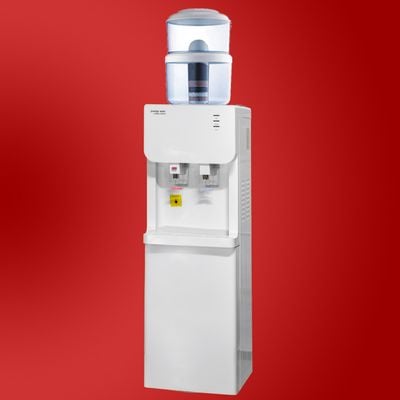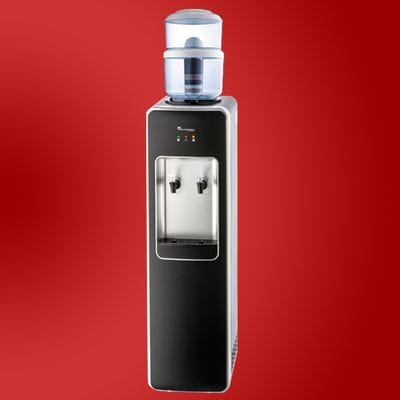Water Cooler Moama
Great tasting water made from your own tap with Prestige Water Cooler Moama
 Benchtop Water Dispenser Moama:
Benchtop Water Dispenser Moama: ![]()
 Floor Standing Water Dispenser Moama:
Floor Standing Water Dispenser Moama: ![]()
 Exclusive Water Dispenser Moama:
Exclusive Water Dispenser Moama: ![]()
Prestige Water Cooler Moama, Water Dispenser Moama, Water Filter Moama
We deliver water coolers in your area: Moama, Barham, Bunnaloo, Burraboi, Caldwell, Koraleigh, Kyalite, Mathoura, Moulamein, Murray Downs, Speewa, Tantonan, Tooleybuc, Wakool, Womboota.
TIP: Drinking water during exercising
Water is a super drink. I often get the question of what you can drink best during exercise. Is water sufficient, or is it better to opt for a sports drink? How much should you drink during exercise? In addition, there are countless types of sports drinks on the market. What are the differences and when do you use them? I'll answer these questions today.
Moisture needs during exercise
During sports, you lose a lot of moisture through perspiration. Even if you sweat relatively little, you lose moisture through evaporation. This ensures that your body temperature does not rise too much. A small part of this loss of moisture is absorbed by the fact that urine production during exercise is lower, but this is not nearly enough to prevent dehydration. Sufficient drinking during exercise is therefore very important! I advise you to drink between 500 and 1000ml per hour, depending on the intensity and climate with which you exercise. In warm weather or with a lot of sweating, this can even reach 2 litres per hour. Do not take very small sips every time, but try to drink 100-150ml at a time, this ensures, according to research, faster absorption of the fluid through the body.
It is important to drink on time when you are exercising, if you are thirsty, you are already too late. The dehydration is then already about 2%, which has a negative effect on your sports performance. Therefore, try to teach yourself to start drinking almost immediately when you exercise. Fill a bottle of 500ml and make sure it is empty after an hour of exercise. You can supplement the rest of the fluid requirement after training.
Do you want to know exactly what your fluid needs are? Then go immediately before and immediately after playing on the scales. Multiply your weight by 1.5 and you know how much you have to drink. With 1kg of weight loss, you drink 1.5 litres, because not all the fluid ingested is retained by the body.
Types of sports drink
Sports drinks can be divided into 3 categories. This classification is based on the amount of sugar (carbohydrates) and salt per 100ml drink (particle density or osmolarity). The more the osmolarity is equal to that of our blood, the faster the absorption in the body.
Hypo tonic sports drink: contains fewer carbohydrates and salt than the blood, namely less than 4 g of carbohydrates per 100 ml of drink.
Isotonic sports drink: has a composition that is approximately equal to the blood, which means 4 to 8 g of carbohydrates per 100 ml of drink.
Hypertonic sports drink: contains more carbohydrates and salt than the blood, ie more than 8g of carbohydrates per 100ml of drink.
When which drink?
The body generally has sufficient glycogen stores (carbohydrates in the muscles) for about 1.5 hours of exercise. If you are sporting more than 1.5 hours, it is therefore important to supplement carbohydrates. If you exercise less than 1.5 hours, drinking water alone is often sufficient! Especially when you lose weight, it is a shame to take caloric and sugary drinks because you are working to lose the calories. Make sure you have drunk enough before exercising, even then water is fine. Drink more water in hot weather.
If you exercise for more than 1.5 hours, I recommend using an isotonic sports drink. In addition to moisture, it also contains carbohydrates and minerals that you lose through perspiration. Because the osmolarity of this drink is about the same as that of the blood, the drink is easily absorbed into the body. The sodium contains in the drink ensures that the fluid is better retained by the body. In addition, it stimulates the thirst stimulus, so that you keep drinking while exercising. An example of an isotonic sports drink is the Aquarius below.
Do you often have a headache after exercising? Then try an isotonic sports drink, probably your body, in addition to water, also needs minerals.
Instead of a ready-to-drink beverage, you can also choose a powder that allows you to make isotonic sports drinks by mixing it with water. This is available at large supermarkets, sports shops or health shops. An example is the Isostar below. Carefully follow the instructions on the packaging during preparation.
You can also easily make isotonic sports drinks by mixing the fruit juice of your choice with water (50% juice and 50% water) and adding a pinch of salt.
Of course, you can also supplement your necessary carbohydrates with food during exercise. So you see cyclists sometimes eating a banana or energy bar. However, I often find myself that this is too much of a burden for my gastrointestinal tract. After dinner, it needs more blood and energy to digest the diet, while the muscles also require a lot of energy during exercise! This quickly causes abdominal complaints in me.
Isostar
Hypertonic sports drink like the AA below is generally not suitable during exercise. A large number of carbohydrates in the drink slows down gastric emptying, so the carbohydrates are absorbed less quickly in the body. This is while your muscles need immediate carbohydrates!
This type of sports drink is sometimes used by (top) athletes after a very intense sporting moment. Especially for athletes who have to perform again the next day, it is very important to supplement the shortages of the body directly, preferably within 30 minutes. Because food is not recommended so quickly after exercise, a hypertonic sports drink is used. Roughly, you need about 1g of carbohydrate per kg of body weight per hour of intensive exercise to recover. For someone of 70kg, 70g of carbohydrates after an hour of sports. The following bottle of AA contains 3.3 x 16.5 = 54.5 g of carbohydrates.
Bottled water, Tap water or Filtered water. If a super fast recovery is not so important, I recommend supplementing the shortages later with, for example, a rice or pasta meal. This gives your body more essential nutrients than just the quick sugars from the sports drink.
Again, this only applies to very intensive sportspeople who want to prevent weight loss and want to recover optimally. This is absolutely not necessary for recreational athletes!
To my amazement, I often see small children running on sports fields with a bottle of AA drinking after exercise. Be aware that there is + -50g sugar in this bottle, which corresponds to more than 12 sugar cubes! A child does not need this after exercise, rather give them an hour later.
The temperature of the drink
Cold water drinking. For a long time, it has been thought that too cold a drink can cause abdominal complaints during exercise. However, no evidence has been found for this after various studies. it is likely that these symptoms are caused by a too large amount of drinking in a short time. I recommend choosing a temperature that you like and do not drink more than 150ml at a time.
Conclusion
For the 'average athlete', drinking water during exercise is sufficient. Only if you exercise for more than 1.5 hours, or if you quickly lose unwanted weight, then I advise you to use an isotonic sports drink while exercising. Hypertonic sports drinks are only useful for very intensive sportsmen who want to recover as quickly as possible.


